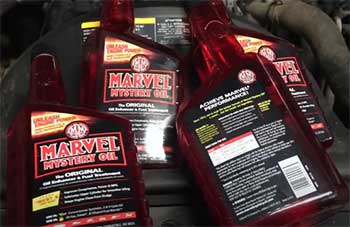If you’re chasing better engine performance without breaking the bank, Gumout Octane Booster is your ticket. I’ve tested it, felt the difference, and I’m hooked.
This little bottle packs a punch, smoothing out your ride and saving you from pricey premium gas. Trust me, it’s a game-changer for your car’s power and wallet. Let’s walk through my experience, the highs, the lows, and how to make it work for you.
My Journey With Gumout Octane Booster

Picture this: I’m driving my 2008 Honda Civic, a trusty daily driver with 150,000 miles on the clock.
Lately, it’s been sluggish, like it’s dragging its feet uphill.
I’d hear that annoying pinging sound when I pushed the accelerator, and premium gas was burning a hole in my pocket.
A mechanic friend suggested an octane booster, and I landed on Gumout’s 10 oz. bottle at Walmart for about $4. Cheap enough to try without crying if it flopped.
I poured the entire bottle into a nearly empty tank, filled it with 87-octane regular gas, and hit the road. Within 20 miles, I noticed something. The engine felt smoother, like it was breathing easier.
That pinging?
Gone.
Accelerating up a steep hill near my house didn’t feel like I was asking my car to run a marathon anymore. I even gunned it on the highway, and the Civic responded with a pep I hadn’t felt in years. It wasn’t like I’d slapped a turbo on it, but the difference was real.
Over the next few tanks, I kept using Gumout at every fill-up, as the bottle suggests. My gas mileage crept up by about 1-2 MPG, which doesn’t sound like much but adds up when you’re commuting 50 miles a day.
The best part?
I was saving $5-$10 per tank by sticking with regular gas instead of premium. I even tried it on my buddy’s old Yamaha R1 motorcycle, and he swore it ran smoother with less vibration. My skepticism started fading fast. This stuff wasn’t snake oil—it was delivering. Sure, it’s not perfect, but I’ll get to that later.
For now, I was a believer.
Pros of Gumout Octane Booster
- Cost-Effective Alternative to Premium Gas
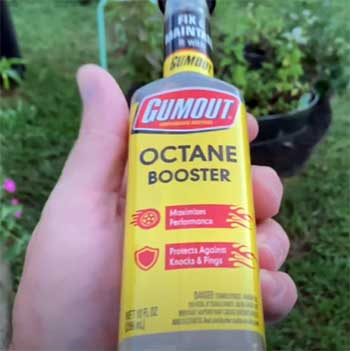
Let’s talk money. Premium gas in my area runs $0.75-$1.25 more per gallon than regular.
For my 14-gallon tank, that’s $10-$17 extra every fill-up.
Gumout’s $4 bottle treats up to 15 gallons, so I’m saving serious cash.
I used it in my Civic and saw performance close to premium gas without the sticker shock.
One Amazon reviewer with a 2001 Honda Passport said it let them use 87-octane gas without spark knock, saving them $15 per tank.
That’s real-world proof it works.
- Noticeable Performance Boost
I’m not driving a racecar, but Gumout made my Civic feel alive again. The pinging stopped, acceleration was smoother, and I could push the engine harder without it complaining. A Home Depot reviewer with a tuned Yamaha R1 claimed a 6.22 horsepower boost and less noise.
Another user with five Corvettes over 16 years swore by it for every fill-up. Even my high-mileage engine felt peppier, which is a win when your car’s older than some TikTok stars.
- Easy to Use
No rocket science here. You dump the bottle into a nearly empty tank, fill up with gas, and go. The 10 oz. bottle is pre-measured for 15 gallons, so you’re not guessing or spilling. I’ve poured it in at gas stations without a funnel, and it’s mess-free.
A Walmart reviewer loved how it was “exactly what I needed” for their Cadillac CTS-V, with no hassle. If you can pump gas, you can use this.
- Safe for Most Engines
Gumout’s formula is oxygen-sensor safe and won’t void your warranty. I checked my Civic’s manual, and it’s fine for my engine. It’s also safe for turbocharged and supercharged vehicles, which is great if you’ve got a sportier ride.
A user on Amazon mentioned using it in a 93 Jeep with 150,000 miles, keeping it “going strong.” I had no issues with my fuel system or sensors after months of use, so it feels trustworthy.
- Reduces Emissions and Cleans Injectors
This was a surprise perk. Gumout claims it helps reduce emissions, and while I didn’t test my exhaust, the bottle says it cleans fuel injectors. My engine ran smoother over time, which suggests it’s keeping things tidy in there.
A Kia Forum user noted less throttle surging and cleaner injectors with regular use. For older cars like mine, this is a bonus to fight carbon buildup.
Not-So-Good Parts of Gumout Octane Booster
- Limited Octane Increase
Gumout boosts octane by 8 points, or 0.8 levels (e.g., 87 to 87.8. That’s not huge. If your car needs 93 octane, you might need two bottles to kill engine knock, like one Amazon reviewer with a supercharged GTO did.
For my Civic, it was enough, but high-performance engines might need stronger stuff like BOOSTane, which can hit 116 octane. If you’re tuning a racecar, Gumout’s boost might feel like a tease.
- Inconsistent Results Across Vehicles
Not every car loves Gumout. I saw great results, but some Amazon reviewers reported no power or mileage gains. One user with a new Mercedes-Benz still heard knocking even with Gumout and 93-octane gas. My buddy’s 2015 Subaru didn’t notice much difference either.
It seems to shine in older or high-mileage engines but might not wow newer, finely tuned ones. Your mileage—literally—may vary.
- Price Creep
When I started using Gumout, it was $3-$4. Now, some Amazon listings show it closer to $6, and a pack of six can hit $30. One reviewer complained it’s “grossly overpriced” compared to a year ago.
It’s still cheaper than premium gas, but if prices keep climbing, the savings shrink. I’d stock up when it’s on sale to keep it budget-friendly.
- Not a Cure-All
Gumout won’t fix a broken engine. If your car’s knocking is from bad spark plugs or a deeper issue, this isn’t a magic potion. I had to replace my Civic’s plugs before Gumout really shone.
A Reddit user pointed out additives can’t clean a filthy fuel tank, so don’t expect miracles if your car’s neglected. It’s a booster, not a mechanic in a bottle.
Tips For Using Gumout Octane Booster
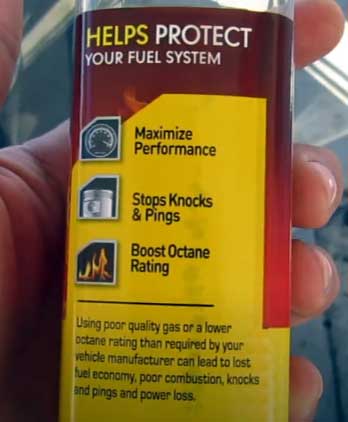
- Use It Regularly for Best Results: Gumout’s label says to use it every fill-up, and I agree. I noticed the smoothest performance when I didn’t skip doses. A Walmart reviewer with a Volvo C70 used it consistently to refresh stale fuel and reduce carbon buildup. Add it to a nearly empty tank before filling up to ensure it mixes well. I keep a six-pack in my trunk so I’m never caught without it.
- Pair with Top-Tier Gas: Reddit mechanics swear by Top-Tier gas (Shell, Exxon, etc.) to minimize carbon buildup. I switched to Costco’s Top-Tier 87-octane with Gumout, and my engine ran even cleaner. A BobIsTheOilGuy user said Top-Tier gas plus Gumout is “cheap insurance” for high-compression engines. Check your gas station’s rating and stick with quality fuel to maximize Gumout’s benefits.
- Check Your Owner’s Manual: Not all engines need octane boosters. My Civic’s manual says 87-octane is fine, but I used Gumout to mimic premium gas. If your car requires 91 or higher, Gumout might not cut it alone. A Kia Forum user warned that too-high octane can hurt performance in low-compression engines. Confirm your car’s needs to avoid wasting money or causing issues.
- Store It Properly: Gumout’s bottle is sturdy, but don’t leave it baking in your car’s trunk. Heat can degrade additives. I keep mine in a cool garage cabinet. A Driving.ca expert noted that octane boosters have a short shelf life if exposed to extreme temps. Buy what you’ll use within a year to keep it potent.
- Combine with Fuel System Cleaners: For older cars like mine, I run a bottle of Gumout Multi-System Tune-Up every 3,000 miles alongside the octane booster. It cleans injectors and valves deeper than the booster alone. A Reddit user praised Gumout’s fuel system cleaner for smoothing idle in an old Dodge. This combo keeps my Civic humming without pricey shop visits.
Comparison of Gumout Octane Booster With Other Brands
I’ve tested Gumout against STP and researched Lucas Oil Octane Booster and VP Octane Booster to see how they stack up. Each comparison below breaks down key factors like performance, cost, and usability, so you can decide what’s best for your ride.
- Gumout Vs. Lucas Oil Octane Booster
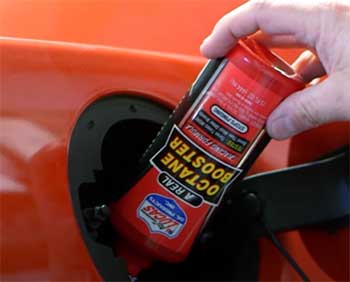
Lucas Oil claims a 15-point octane boost, nearly double Gumout’s 8 points.
A Reddit user with a 2010 Camaro SS said Lucas eliminated pinging on 89-octane gas, while my Civic was happy with Gumout’s boost.
Lucas costs $8 for 15 oz., treating 25 gallons, but Gumout’s $4 for 10 oz. (15 gallons) is cheaper per tank.
Both are oxygen sensor-safe, but Lucas isn’t street-legal in some states, per a forum post.
Gumout’s easier pour and affordability make it my pick for daily driving, but Lucas suits performance cars needing a bigger kick.
- Gumout Vs. VP Octane Booster
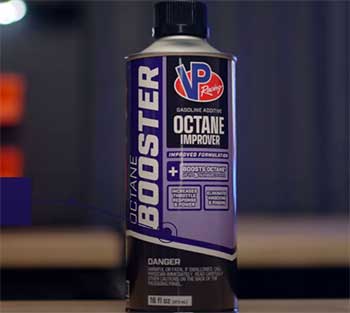
VP Octane Booster, like VP Maddictive, boasts a 24-point octane jump, dwarfing Gumout’s 8 points.
A Mustang forum user raved about VP’s power in race-tuned engines.
At $25 for 32 oz., VP treats 80 gallons, but it’s not street-legal and can gum up daily drivers, per a forum warning.
Gumout’s $4 bottle is safer for my Civic’s sensors and catalytic converter.
VP’s measuring hassle for smaller tanks annoyed me, while Gumout’s pre-measured bottle is foolproof.
VP’s for racers; Gumout’s for commuters like me.
- Gumout Vs. STP Octane Booster
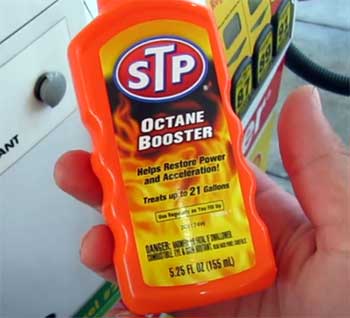
STP’s 5.25 oz. bottle costs $3-$4, close to Gumout’s $4 for 10 oz.
Both boost octane by 6-8 points, but STP only treats 10 gallons, making Gumout more economical.
I tried STP, and it worked fine, but it’s not catalytic converter-safe, unlike Gumout.
TheDrive praised STP’s intake valve cleaning, but I noticed no edge over Gumout’s injector-cleaning perk.
STP’s smaller bottle means more frequent buys, which is a hassle.
Gumout’s larger size and broader safety win for my daily driver.
Frequently Asked Questions (FAQ)
Yes, it worked for me. My Civic’s pinging stopped, and acceleration smoothed out. Amazon and Home Depot reviews back this up, with users reporting better power in older cars like Jeeps and Corvettes. Results vary—newer cars might not feel much—but for high-mileage or knocking engines, it’s effective.
Gumout increases octane by 8 points, or 0.8 levels (e.g., 87 to 87.8″ target=”_blank” rel=”noopener noreferrer”>. This varies by fuel volume and gas quality. For big jumps, you might need multiple bottles, as one Amazon user did for a GTO. It’s not as potent as race-focused boosters like BOOSTane.
They can, but it depends. Gumout and others like Lucas Oil reduce knocking and boost performance in engines needing higher octane. Reddit mechanics say they’re less effective in modern cars with knock sensors. For older or high-compression engines, they’re a cheap fix. Always use with the right gas for your car.
Gumout’s great for daily drivers due to its price, ease, and safety. For racecars, Royal Purple Max Boost or BOOSTane Professional lead with higher octane jumps. TheDrive picked Torco Accelerator, but it’s pricey and not street-legal. Your car’s needs decide—Gumout’s my pick for budget and reliability.
Conclusion: Get Gumout Octane Booster Now
After months of testing, I’m sold on Gumout Octane Booster. It’s affordable, boosts my Civic’s performance, and saves me from premium gas prices.
Whether you’re nursing an old car or want a smoother ride, this is a no-brainer. Grab a bottle, feel the difference, and keep your engine happy without emptying your wallet.
